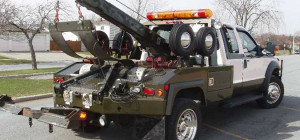 If you have recently purchased your caravan, you have opened a new door of numerous camping and adventures during holidays, not just in highways but also in hiking trails and quaint beaches. But along with all the fun and thrilling outdoor activities, you have to keep all the possible dangers and safety precautions in mind.
If you have recently purchased your caravan, you have opened a new door of numerous camping and adventures during holidays, not just in highways but also in hiking trails and quaint beaches. But along with all the fun and thrilling outdoor activities, you have to keep all the possible dangers and safety precautions in mind.
So before you take your brand new caravan out for its first spin, make sure you know all the essentials of preparing the towing vehicle for caravan hitch.
Here are some important tips.
1. Verify your towing vehicle compatibility
First, you need to confirm that your own car is really suitable for the towing job. Whether your towing car/vehicle and caravan will make proper conjunction for a safe, smooth and convenient journey.
The better the car and caravan match is, the more convenient the journey will be while towing. To check if your car is the right fit for towing a caravan, check your car’s maximum towing capacity.
2. Be accurate with the tow bar connection
Before towing your caravan, a tow bar will have to be attached to the rear of your towing car. This tow bar is the connection device in between the vehicle and the caravan. Tow bar features almost a 50mm iron ball that comes with different shapes and models including gooseneck, detachable, non-detachable accessories, flange, and so on.
Keep in mind that your attached tow bars must meet Australian requirements with full compatibility with your towing car.
3. Choose the right towing vehicle
To assure yours and other road users’ safety, making the right combination of trailer and tow vehicle is very important. Finding a car with sufficient towing capacity for a large caravan can be a little hard to find. In general terms, only SUVs like 4WD have the adequate towing capacity for a comparatively large caravan.
However, once your caravan exceeds more than 3,000, the options for the suitable tow vehicle and utilities become very limited. The caravans get more cumbersome when you want to add too many features into it. When the caravan is more substantial, a sturdier structure big 4WD might be the right choice. But it might not be a cost-effective long term solution because of the car’s size, high fuel consumption, high-maintenance, difficulty in parking, and so on.
In general terms, vehicles that are attached with automatic transmission have way better towing capacity than the manual transmission. Manual vehicles have lower towing capacity since the process of shifting gears are also manual and any accident can occur when towing large loads. So go for a 2WD, 4WD, or all-wheel-drive vehicle as your towing car.
4. Choose the right type of Hitch for towing
When you’re on your way to a great adventure, the last thing you want is to keep looking into your motor and transmission. To have a stress-free camping plan, put your thoughts into the right towing hitch selection.
Receiver towing hitches are generally divided into 5 classes, depending on the towing sizes. The higher the tow class number, the higher the hitch’s capacity. These hitch classes are made very much vehicle-specific. If you’re planning to frequently tow your caravan, then consider maximizing your towing potential with class 5 receiver hitch (or higher) and with larger hitch receiver. These types of hitch classes are common in the full-size heavy-duty SUVs and pickups, trucks. Usually, class 5 hitches and above have ball weight of more than 635 kg, GTW of more than 6350 kg (Gross Trailer Weight) and shank of 2’’ sold steel to handle heavy loads.
Since most caravans are towed with a ball hitch, make sure the receiver on the caravan tongue is securely tightened over the ball. In addition to that, the ball hitch itself is securely fastened to the towing apparatus as well.
5. Distribute the load evenly
The most important thing to maintain while preparing your vehicle for towing caravan is the proper load distribution. Too much load towards the front part of your caravan can put strains on both your car’s suspension and the tow hitch.
Too much weight at the back, on the other hand, might make your caravan unstable. Make sure you do not have objects projecting past the sides of your caravan, since this much eventually cause wear and tear, impacting on the braking and steering. So your caravan load should be slightly heavier to the front of the axels to prevent the tongue from pulling upward on the hitch.
6. Check the brakes and electrics
Before you drive off with your loaded caravan, you need to look into some of the vehicle electrics. All caravans of more than 750 kg GTM (Gross Trailer Mass) must be fitted with electric brakes, if the caravan has its own brakes, make sure of their correct operations. Consider installing an electronic brake controller to enable the electric brakes in the towing vehicle. If the electric brake controller is correctly adjusted, you’ll be able to keep the towing car and caravan combination at the same force.
Make sure your caravan must have a safety chain attached to your towing car for emergency safety on the move. Check if your vehicle’s tires are correctly inflated along with spare tires and required tools. So overall, give all the electrical and operational mechanisms of both your caravan and tow vehicle a thorough check.






